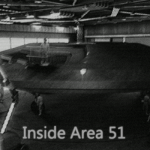When we gaze up at the night sky, we often can’t help but ponder whether there might be other places in the universe that we could call “home.” However, perhaps few have considered that just 22 light-years away from our Earth, there exists a planet with astonishing similarities. Gliese 667 Cc, this enigmatic celestial body, shares striking commonalities with Earth, boasting an 84% resemblance. It is this similarity that has ignited endless curiosity and a yearning for exploration.
This distant planet resides within the Gliese 667 trinary star system, making it one of the most captivating entities in this constellation. The discovery of Gliese 667 Cc has opened up our imaginations to the boundless possibilities of life existing in space. From its geographical features to the potential composition of its atmosphere and its location within the “habitable zone,” we are about to delve deep into the mysteries of this mysterious planet and explore whether it could become the new home for humanity. Join us on this journey of exploration as we uncover the enigma of Gliese 667 Cc.

Characteristics of Gliese 667 Cc:
- Stellar System: Gliese 667 Cc is an exoplanet that orbits the star Gliese 667C, which is part of the Gliese 667 trinary star system.
- Mass Range: Gliese 667 Cc’s mass is estimated to be between 4½ to 9 times the mass of Earth.
- Distance and Location: Gliese 667 Cc is situated in the closer three-star system Gliese 667, approximately 22.7 light-years away from Earth, within the Scorpius constellation.
- Method of Discovery: Gliese 667 Cc was first discovered using the high-precision radial velocity planet-finding instrument, HARPS (High Accuracy Radial velocity Planet Searcher), utilizing the radial velocity method (Doppler method) on November 21, 2011.
- Stellar Insolation and Habitable Zone: Gliese 667 Cc falls within the inner edge of the habitable zone around its parent star Gliese 667C, receiving about 90% of the light Earth receives. However, most of this light is in the form of invisible infrared radiation.
- Orbital Characteristics: Gliese 667 Cc has a semimajor axis of only 0.1251 astronomical units, with a year length of approximately 28.155 Earth days.
- Surface Temperature: Calculated using a black-body temperature approach, Gliese 667 Cc’s surface temperature is around 277.4K, slightly higher than Earth, closer to the “warm” edge of the habitable zone.
- Other Planets of the Parent Star: The star Gliese 667C hosts at least seven planets, including Gliese 667Cb and Gliese 667 Cc, both of which are more massive, falling into the super-Earth category.
- Potential for Life: Gliese 667 Cc’s mass and location make it one of the top candidates for finding planets with liquid water, which could be conducive to the existence of life.
Analysis of the Habitability of Gliese 667 Cc:
Gliese 667 Cc is a mesmerizing planet with a range of habitable conditions and potential challenges for habitation. Here is a detailed analysis of these factors:

Habitability of Gliese 667 Cc:
- Stellar Luminosity and Temperature: Gliese 667 Cc’s star is smaller than the Sun, resulting in it receiving approximately 10% less light than Earth. This may lead to relatively lower surface temperatures, although most of the light is in the form of infrared radiation.
- Potential for Liquid Water: Since Gliese 667 Cc is located within its star’s habitable zone, conditions for maintaining liquid water are possible. Liquid water is a crucial component for life.
- Atmospheric Similarity: If Gliese 667 Cc’s atmosphere resembles that of Earth, surface temperatures may fall within the range suitable for human habitation.
- Potential for Life: The presence of liquid water and favorable temperatures creates opportunities for life to thrive. However, further research is required to confirm the existence of life.
Challenges of Living on Gliese 667 Cc:
- Low Luminous Intensity: Gliese 667 Cc’s primary star is a red dwarf with low brightness, potentially affecting visibility. Insufficient light could pose challenges for habitation and survival.
- Tidal Locking: Due to the close proximity of Gliese 667 Cc to its primary star, it almost always has one side facing the star, resulting in perpetual daylight on one side and perpetual darkness on the other. This could lead to extreme temperature variations and an unstable climate.
- Radiation Issues: M-type red dwarfs typically emit intense flares, producing high-energy radiation and particle bursts. This radiation could be hazardous to organisms and electronic equipment, necessitating solutions to ensure safety.
- Wireless Communication Interference: Flares and radiation may impact communication systems, including wireless communication. Specialized technology and solutions would be required to address potential communication interference.
In summary, Gliese 667 Cc possesses some habitable conditions but also presents living challenges, such as low luminous intensity, tidal locking, radiation issues, and communication interference. Addressing these challenges will require advanced technology and research to enhance its viability as a potential relocation destination. The ongoing development of technology may provide more opportunities for future interstellar migration, but further research and technological advancements are necessary. Furthermore, scientists have discovered other potentially habitable exoplanets in the past few decades, expanding our choices.
Characteristics of the Gliese 667 System:

The Gliese 667 system is a remarkable star system with the following features:
- Trinary Star System: The core of the Gliese 667 system is the star Gliese 667C, but unlike our solar system, it is part of a trinary star system. This system is located in the Scorpius constellation and is approximately 22.7 light-years away from Earth. In addition to Gliese 667C, it includes the stars Gliese 667A and Gliese 667B.
- Stellar Properties: Gliese 667C is a red dwarf star with a mass of only 38% of the Sun and luminosity of 0.3% of the Sun. Gliese 667A and Gliese 667B are orange dwarf stars with masses of 65% and 75% of the Sun, and luminosities of 5% and 12%-13% of the Sun, respectively. In the skies of Gliese 667 Cc, you can see three “suns,” but Gliese 667A and Gliese 667B might appear more like larger stars.
- Planet Discoveries: The Gliese 667 system has at least five planets recorded by NASA, with three located in the habitable zone. Gliese 667 Cc is one of them, along with Gliese 667Cf and Gliese 667Ce. These planets may be tidally locked due to their proximity to the red dwarf star, resulting in one side continuously facing the star and the other in perpetual darkness.
- Habitability: Despite the challenges of tidal locking, Gliese 667 Cc appears more suitable for human habitation compared to Gliese 832C. This super-Earth is located within the habitable zone, where liquid water may exist, a crucial factor for life development. However, further research is needed regarding its surface conditions and habitability.
In conclusion, the Gliese 667 system is a multi-star system with several planets, some of which may possess habitable potential. However, challenges related to tidal locking and other factors must be seriously considered to determine whether these planets are genuinely suitable for habitation. The exploration of Gliese 667 Cc holds the promise of providing new opportunities and insights for interstellar migration by humanity.
END:
Gliese 667 Cc, as a captivating super-Earth, unveils a glimpse of the infinite possibilities in the cosmos. Despite some potential challenges, such as tidal locking and the flaring activity of the red dwarf star, the habitable conditions of Gliese 667 Cc are inspiring.
In the future, scientists and astronauts may intensify their research and exploration of this planet. We anticipate that more space probes and telescopes will subject it to closer scrutiny, unraveling more mysteries about its atmosphere, surface conditions, and potential for life. Perhaps there will be manned missions to Gliese 667 Cc, aiming to address issues like tidal locking and radiation, laying the foundation for establishing a foothold for humanity on an alien world.
The discovery of Gliese 667 Cc has also kindled our interest in the exploration of other potentially habitable exoplanets. Over the past few decades, scientists have identified numerous such planets, which may become targets for human habitation in the future.
Regardless of what the future holds, Gliese 667 Cc represents our curiosity and desire to explore the cosmos. It reminds us that the universe is still full of the unknown, waiting for us to discover and understand. Perhaps, in the not-so-distant future, we may find a new home on this planet, continuing the journey of human survival and exploration.
More UFOs and mysterious files, please check out our YouTube channel: MysFiles
Andromedans Encounters: Reveal the history of humanity








